Cycling Sicily: Everything You Need to Know
Your complete guide to cycling Sicily — discover when to go, where to ride, what to see, and plan the perfect cycling trip on the Mediterranean’s largest island.

Quick Links
Sicily isn’t a predictable cycling destination. It’s not a place you visit for one type of landscape or one signature climb. Instead, it feels like several countries packed into a single island — each ride revealing a completely different world.
What makes cycling Sicily truly special is this sense of constant contrast — dramatic terrain changes, ancient cities appearing around bends, and food so good it becomes part of the itinerary rather than something you think about afterwards.
It’s Italy, but wilder. Mediterranean, but more complex. Beautiful, but never predictable.
For cyclists, that combination is gold.
Sicily delivers:
A long cycling season (March–November, with mild winters along the coast)
Coastal rides, rolling hills, and serious climbs — all within short travel distances
Routes suitable for every rider, whether you want relaxed touring or challenging elevation
Rich cultural stops that turn every ride into a discovery
Authentic local hospitality, especially once you leave the big cities

If you’ve never been to Italy before, this is a region that will surprise you in all the best ways. It’s cycling with substance: scenery, history, challenge, warmth, and character — all wrapped into one island.
Why Cycle Sicily
Sicily is one of those places that rewards curiosity. The more you explore, the better it gets — and cycling happens to be the perfect way to experience its mix of landscapes, history, and everyday life.
Here’s what makes the island such a strong choice for a cycling holiday:
1. The Most Varied Cycling in Southern Italy
Sicily offers almost every type of terrain a cyclist could want — without requiring long transfers or complicated planning.
You’ll find:
Coastal roads with wide-open sea views
Rolling countryside lined with vineyards, olive groves, and citrus fields
Mountain climbs into the rugged interior
Volcanic slopes around Mount Etna, one of Europe’s most unique cycling experiences
This diversity means you can build routes that match any level — or mix easy and challenging days in the same trip.
2. A Long, Reliable Cycling Season
Sicily’s climate is one of its biggest advantages.
While northern Italy cools quickly, Sicily stays mild and sunny deep into autumn.
The best conditions run from March to June and September to November, but even winter along the coast remains rideable with temperatures often above 15°C.
For riders wanting early-season training or an autumn escape, Sicily is one of Italy’s most dependable options. Want more insight? Skip to the weather section.

3. Quiet Backroads & Authentic Villages
The moment you leave major urban centres, Sicily becomes incredibly peaceful.
You can ride for kilometres on empty rural roads, passing stone farmhouses, family-run wineries, and small villages that feel unchanged for generations.
This lack of traffic — especially outside peak summer — makes riding not only enjoyable but also more relaxed compared to Italy’s busier regions.

4. A Cycling Destination with Real Culture
Sicily doesn’t provide “pretty scenery” alone — it offers a unique historical depth. On a single route you will encounter:
Ancient Greek theatres
Norman cathedrals
Baroque towns rebuilt after historic earthquakes
Arab-influenced architecture and markets
UNESCO-listed city centres
Few places allow you to combine satisfying rides with such rich cultural stops.
See the top things to see in Sicily.
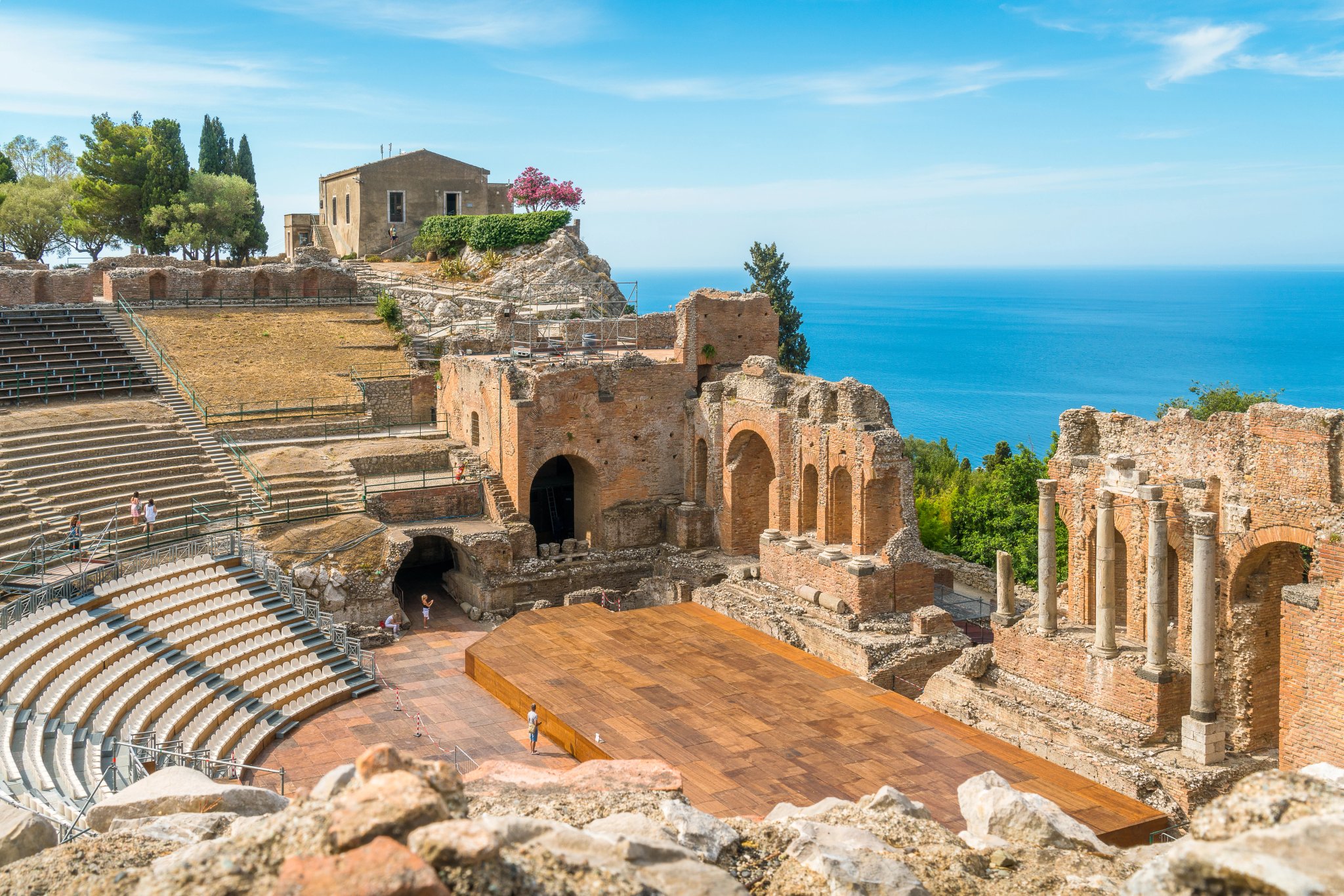
5. Food That Makes Every Ride Better
Sicilian cuisine isn’t something you try after the ride — it becomes a highlight of the journey.
Expect:
Fresh seafood on the coast
Pasta with pistachios, ricotta, or swordfish
Cannoli and granita
Oranges, lemons, almonds, and capers straight from the region
Exceptional local wines like Nero d’Avola and Grillo
It’s Mediterranean fuel at its best — simple, fresh, and highly satisfying after a long day on the bike. Craving more? See the must-try dishes in Italy!

6. Plenty of Options for Different Cycling Styles
Sicily works equally well for:
Road cyclists seeking challenging climbs and longer distances
Leisure riders who prefer coastal and rolling routes
E-bike travellers who want access to the scenic interior without steep difficulty
Couples or mixed-ability groups
Cyclists combining sightseeing + riding
The island is large enough for multi-day tours but compact enough to avoid long daily transfers.

7. The Unpolished Charm of a Less Commercial Destination
Sicily is not “perfectly curated” like some European hotspots — and that’s part of its appeal.
It’s a destination where local life still sets the rhythm, where towns feel lived-in rather than staged, and where natural landscapes remain largely untouched.
For cyclists who prefer authenticity over polished tourism, Sicily often becomes a favourite.
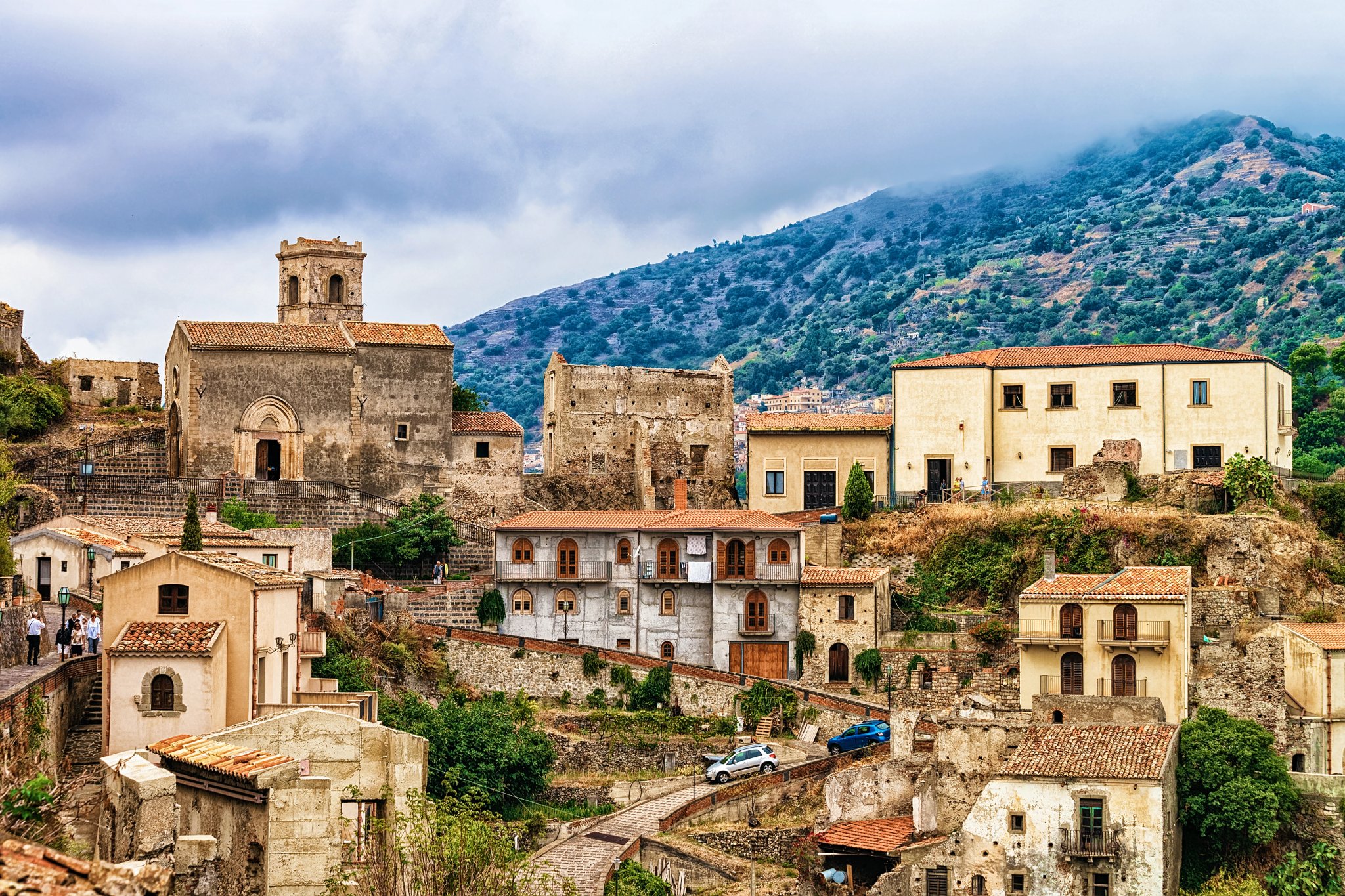
When to Go
Sicily has one of the longest and most reliable cycling seasons in Italy.
With warm springs, bright autumns, and mild coastal winters, the island offers comfortable riding conditions for most of the year.
March–June: Optimal cycling weather across the island
July–August: Hot inland! Ride early or stick to coastal roads
September–October: Excellent top season with warm temperatures & quieter roads
November–February: Mild but less predictable weather, best for costal routes
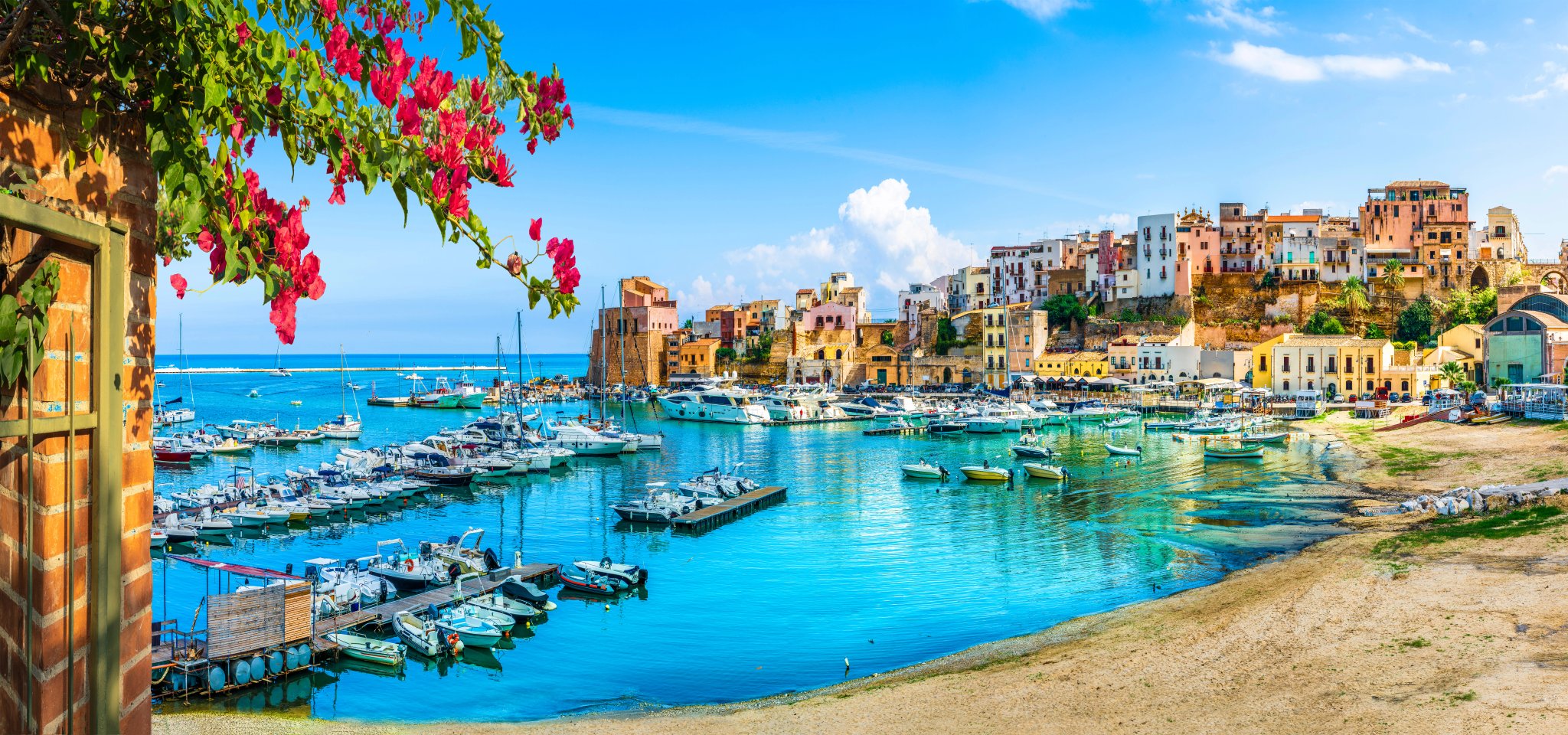
Below is an overview of what to expect in each season so you can plan your trip with confidence.
Spring (March–May)
Spring is one of the most popular times to cycle Sicily. The landscape is green, wildflowers fill the countryside, and there’s a freshness in the air that makes long rides enjoyable. The weather is warm without the intense summer sun, and traffic is still light.
Temperatures: 16–24°C
Best for: All cyclists — ideal balance of warmth, daylight & comfort
Why ride in spring:
Perfect temperatures
Longer days
Lush countryside and clear coastal views
Ideal for both coastal and inland routes

Summer (June–August)
Summer in Sicily is beautiful but hot — especially inland. If you plan to ride at this time of year, start early. Coastal breezes help, but midday heat and increased traffic can make long rides difficult.
Temperatures: 28–36°C (hotter inland)
Best for: Early-morning riders, coastal routes, shorter days
Good to know:
Choose coastal routes over inland ones
Start rides early to avoid the midday heat
Expect more tourists, especially near beaches
If you want empty roads and cooler climbs, you’re better off planning your trip earlier or later in the year.

Autumn (September–November)
Autumn is arguably the best season for cycling Sicily. The sea is warm, the air is clear, and the intense summer heat fades quickly. September remains lively, but by October and November, the island becomes quieter — perfect for long, relaxed cycling days.
Temperatures: 22–28°C in early autumn, cooling to 15–20°C by November
Best for: Pleasant weather, quieter roads, cultural exploration
Why ride in autumn:
Warm but comfortable temperatures
Excellent visibility for mountain and coastal rides
Fewer crowds
Harvest season — ideal for food and wine lovers

Winter (December–February)
Winter is not peak cycling season, but Sicily’s coastal areas remain surprisingly mild. You can expect cool mornings, some rain, but generally clear and rideable conditions. The interior and mountains can be cold, so winter routes should focus on the coast.
Temperatures: 12–18°C along the coast, colder inland
Best for: Off-season riders, coastal touring, mild European winter escapes
Good to know:
Quiet roads and low accommodation prices
Shorter days and occasional showers
Great for riders escaping northern Europe’s winter conditions
If you enjoy peaceful rides and don’t mind cooler temperatures, winter is an underrated option.

If you're set on a cycling adventure during winter months, the trails and condition remain great in Spain and Portugal.
Best Bike Routes
Sicily is a large and geographically diverse island, and the best way to understand its cycling potential is to look at it in two halves:
the east, shaped by volcanic landscapes and dramatic coastlines, and
the west, defined by rolling countryside, ancient coastal towns, and wide-open Mediterranean views.
.png&w=2048&q=85)
Most cyclists don’t realize how different these regions feel until they ride them — which is exactly why we designed two complementary tours.
Each route highlights a completely different side of the island, and together they cover the most rewarding cycling terrain Sicily has to offer.
Below is an overview of Sicily’s two major cycling regions:
1. The East Coast & the Island’s Interior
(Syracuse → Noto → Ragusa → Piazza Armerina → Regalbuto → Cesarò → Castiglione di Sicilia → Taormina)
The eastern side of Sicily is the island’s most dramatic region for cycling. It blends coastal riding, deep gorges, Baroque cityscapes, volcanic terrain, and some of the most varied elevation profiles in southern Italy.
This is where cyclists experience Sicily at its most intense in scenery, history, and terrain.

What to Expect on the East Coast & Interior Route
UNESCO Baroque towns like Noto and Ragusa
Long inland climbs and sweeping rural landscapes
Vineyards, canyons, and remote stone villages
Views of Mount Etna, which dominates the skyline in the later stages
Quiet backroads with very little traffic
A satisfying point-to-point progression from ancient Greek Syracuse to iconic Taormina
Ideal for: Cyclists who enjoy variety: a mix of coastline, hills, cultural towns, and mountain scenery with meaningful elevation gain. This route feels like a journey through Sicily’s cultural and geological heart.
Suggested Itinerary
Your east coast + inland itinerary is perfectly structured for riders who want to see Sicily evolve day by day:
Day 1–2: Ancient Syracuse → baroque Noto (gentle coastal start)
Day 3–4: Noto → Ragusa → Piazza Armerina (UNESCO towns, rolling terrain, hilltop textures)
Day 5–6: Piazza Armerina → Regalbuto → Cesarò (the rural interior, remote landscapes, bigger climbs)
Day 7–8: Cesarò → Castiglione di Sicilia → Taormina (Etna views, wine country, dramatic final descent to the coast)
Sounds Complicated? Nothing to Worry About
We’ve done the hard work for you and brought together the best of the East Coast on this tour:
2. The West Coast & the Island’s Rural Heartland
(Castellammare del Golfo → Nubia Saltpans → Selinunte → Sambuca di Sicilia → Corleone → Piana degli Albanesi → Palermo)
Western Sicily feels completely different from the east — softer in terrain, more Mediterranean in atmosphere, and rich in coastal panoramas and cultural sites.
Here, the roads are smoother, the gradients more moderate, and the landscapes framed by warm light and wide horizons.

What to Expect on the West Coast Route
Coastal riding with open sea views and historic ports
Saltpans of Nubia, one of Sicily’s most unique landscapes
Ancient Greek ruins at Selinunte
Rural wine country around Sambuca
Rolling interior hills, olive groves, and quiet farming villages
A rewarding finale arriving directly into vibrant Palermo
Ideal for: Cyclists who enjoy a blend of coastal beauty, history, and approachable riding. Elevation exists, but it’s not as intense as the eastern route — making this region ideal for riders who want scenic, diverse days without the steeper climbs of the interior east.
Suggested Itinerary
Your West Coast itinerary highlights the gentle, cultural, open-air character of the region:
Day 1–2: Castellammare → Nubia Saltpans (coastal riding + unique landscapes)
Day 3: Nubia Saltpans → Selinunte (the Mediterranean meets ancient Greek ruins)
Day 4: Selinunte → Sambuca (rolling hills and wine country)
Day 5–6: Sambuca → Corleone → Piana degli Albanesi (authentic villages, historic inland towns)
Day 7: Piana degli Albanesi → Palermo (a symbolic finish: rolling countryside into Sicily’s capital)
Sounds Too Complicated to Plan? We get it. It’s not easy. But we’ve got your back with everything you need to just arrive in Sicily and start your trip. Here’s an epic tour that highlights the best of the West Coast:
If you’d like to explore Sicily in an active way, but not necessarily set your heart on cycling yet, there’s another great way to do it - on foot! Check out our hiking and walking holidays in Sicily!
Must-See Places in Sicily
Sicily has one of the highest concentrations of cultural landmarks in Italy, including:
seven UNESCO World Heritage Sites,
dozens of historic towns,
archaeological parks, and
unique natural attractions.
From ancient Greek temples to Baroque city centres and active volcanic landscapes, the island offers an exceptional mix of history, architecture, and scenery — all easily explored during a cycling trip.
Here are our favorite places to see:
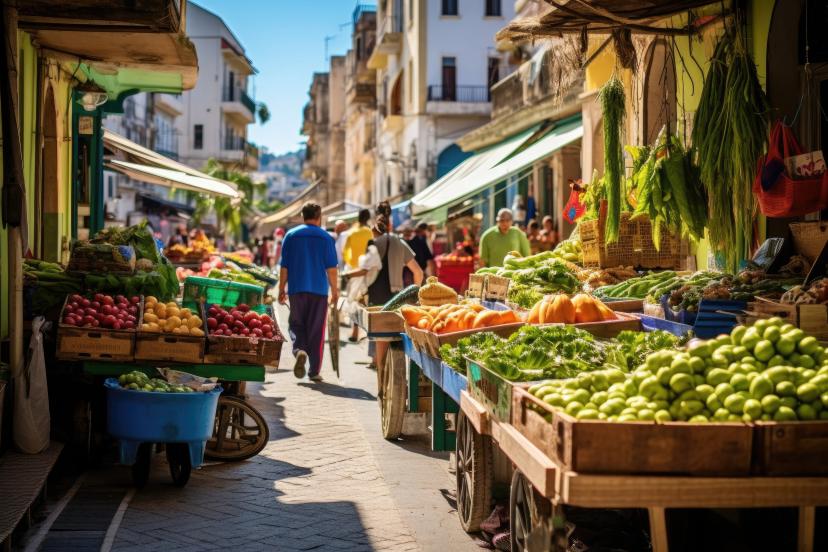
Palermo Markets
The open-air markets of Palermo — Ballarò, Capo, and Vucciria — are among the liveliest and oldest in Europe. They echo the city’s Arabic heritage with their vibrant colors, shouted prices, and aromas of sizzling street food. Here, locals and visitors alike taste the essence of Sicilian life: grilled artichokes, arancini, swordfish, and citrus stacked in pyramids.

Pantalica Nature Reserve
A UNESCO World Heritage Site, the Pantalica Nature Reserve shelters thousands of rock-cut tombs carved into the limestone cliffs of a deep canyon. These prehistoric necropolises, dating from the 13th to 7th centuries BC, form one of the most remarkable archaeological sites in Sicily. The Anapo River winds below, framed by oleanders and wild orchids.

Noto
Noto is the jewel of Sicilian Baroque architecture and a UNESCO World Heritage Site. Rebuilt after the devastating earthquake of 1693, it was designed as a harmonious vision of symmetry, light, and elegance. The golden-hued limestone of its cathedrals and palaces glows at sunset, earning it the nickname “the stone garden.”

Ponte dei Saraceni
The “Bridge of the Saracens” near Adrano spans the Simeto River with elegant lava-stone arches dating back to Norman times, though legend attributes it to Arab builders. Its dark volcanic stones contrast beautifully with the surrounding landscape of orchards and riverbanks. The bridge has withstood floods and centuries of change, standing as a symbol of Sicily’s enduring blend of cultures and craftsmanship.

Teatro Antico di Taormina
Carved into the hillside with Mount Etna and the Ionian Sea as its backdrop, the ancient theater of Taormina is one of the most spectacular archaeological sites in the world. Built by the Greeks in the 3rd century BC and expanded by the Romans, it could seat over 5,000 spectators. Its semicircular form frames one of the most iconic views in Italy.

Erice Panorama
Perched atop Mount Erice at nearly 750 meters above sea level, this medieval town offers one of the most breathtaking panoramas in Sicily. From its ancient walls, the view sweeps across the Egadi Islands, Trapani’s salt pans, and the endless Mediterranean horizon. Stone lanes wind past flower-filled courtyards and churches steeped in legend.

Corleone
Nestled among rolling hills in Sicily’s interior, Corleone is a town of striking contrasts — known both for its medieval roots and its more recent role in Sicily’s Mafia history. Once a Norman stronghold and later a center of peasant revolts, it gained international notoriety in the 20th century as the birthplace of several Mafia figures and as the namesake of The Godfather.
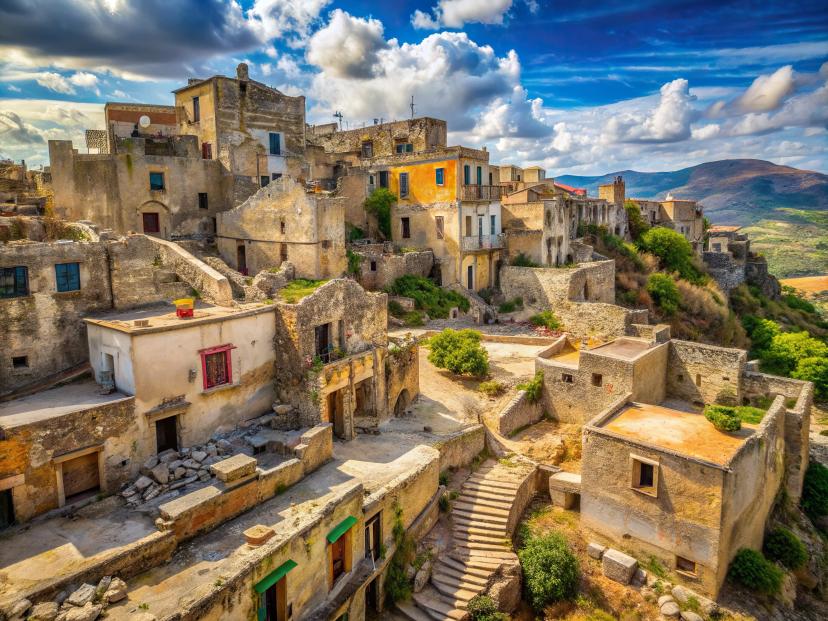
Ruins of Gibellina
The ruins of Gibellina stand as a haunting memorial to the 1968 Belice earthquake that destroyed this Sicilian town. Instead of rebuilding on the same site, artists and architects transformed the ruins into a monumental work of land art — Cretto di Burri. Conceived by Alberto Burri, the site covers the old town with vast white concrete slabs, preserving its street plan like a silent map of memory.
How to Get To and From Sicily
Sicily is well-connected to mainland Italy and the rest of Europe, making travel to your starting point straightforward whether you’re flying in, taking a ferry, or continuing your journey from another Italian region.
The island has two major airports, solid domestic connections, and a public transport network that—while not fast—gets you where you need to go with a bit of planning.
Below is everything cyclists need to know before arriving.
Main International Airports
Catania–Fontanarossa Airport (CTA)
Catania is Sicily’s busiest airport and the easiest entry point for anyone starting a cycling trip on the eastern side of the island.
Good to know:
Direct flights from many major European hubs
1 hour from Syracuse (start of the East tour)
45 minutes to Taormina (end of the East tour)
Reliable bus and train connections from the airport
Bike-friendly transfers available with advance booking
If you’re joining the Syracuse → Taormina tour, this is the most convenient airport for both arrival and departure.
Palermo–Falcone Borsellino Airport (PMO)
Palermo is the main gateway to western Sicily and the natural choice for travellers joining the west coast cycling route.
Good to know:
Direct flights from Rome, Milan, and major European cities
30 minutes to Palermo city centre
45–60 minutes to Castellammare del Golfo (start of the West tour)
Modern airport with frequent bus and train access
If you’re cycling the West Coast of Sicily, flying into or out of PMO is the easiest option.

Getting Around Sicily (Public Transport)
Many travellers arrive in Sicily with expectations shaped by northern Italy — frequent trains, fast connections, and dense networks. Sicily is different. Public transport works, but it works on Sicilian time: slower, more limited, and often focused on locals rather than tourists.
Understanding this before you arrive will save you frustration and help you plan more realistically.
Here’s what you should know:
Trains
Operated by Trenitalia, Sicily’s rail network links main cities but does not cover rural inland areas.
Useful routes include:
Catania ↔ Syracuse
Catania ↔ Taormina ↔ Messina
Palermo ↔ Cefalù ↔ Messina
Palermo ↔ Castelvetrano (limited service)
Bikes:
Regional trains usually allow bicycles
Reservations sometimes required for long distances
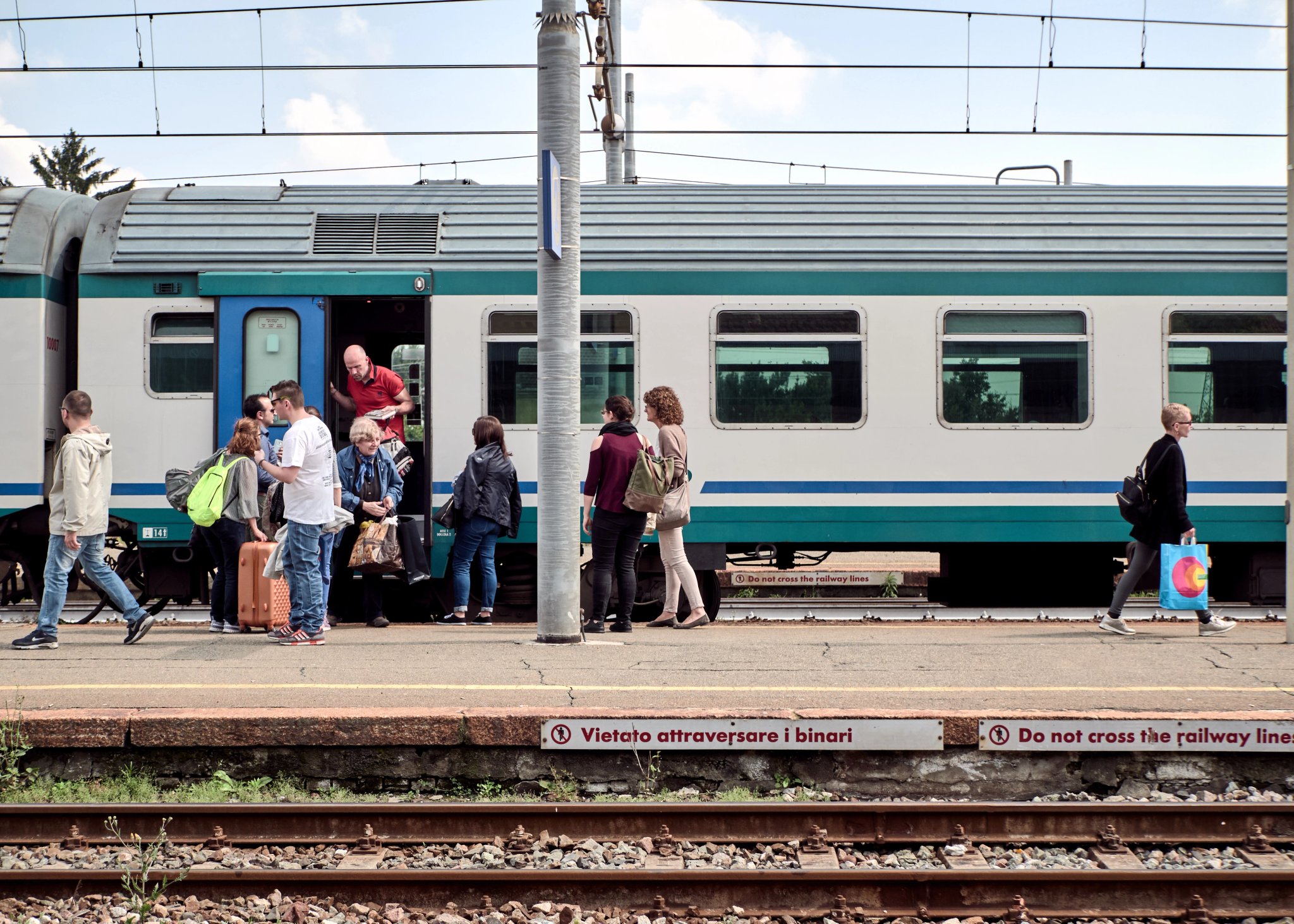
Buses
Buses fill in the gaps where trains don’t operate.
Companies vary by region (AST, Etna Trasporti, Interbus, SAIS).
Good to know:
Buses reach Noto, Ragusa, Corleone, Selinunte, and other towns included in your tours
Schedules can be limited on weekends and holidays

Taxis & Private Transfers
The most reliable way to reach the exact starting point of your tour, especially when travelling with luggage or a bike case.
If navigating Sicily’s transport sounds complicated, don’t worry — when you travel with us, we guide you through everything. You’ll receive clear, simple instructions tailored to your itinerary, your schedule, and your preferences — so your trip starts smoothly and without stress. Uncertain? Reach out and let’s have a chat about it!

Is Cycling Sicily Safe
The short answer: yes — with awareness and proper preparation, cycling in Sicily is safe and very rewarding. There are some specific local factors to know, and by planning smartly, you can ride securely and confidently.
Road Conditions & Infrastructure
Sicily has a mix of modern, well-maintained roads and older rural lanes with rougher surfaces.
Dedicated bike lanes exist in some coastal areas but are not widespread. Most cycling happens on shared roads, which is completely normal in Sicily.
What to expect:
Some inland roads may have potholes or narrow shoulders
Coastal roads are generally smoother and more predictable
Rural areas can go long stretches without services, so planning ahead is important
Your tour routes already avoid the busiest arteries and stick to the safest, most enjoyable cycling roads.
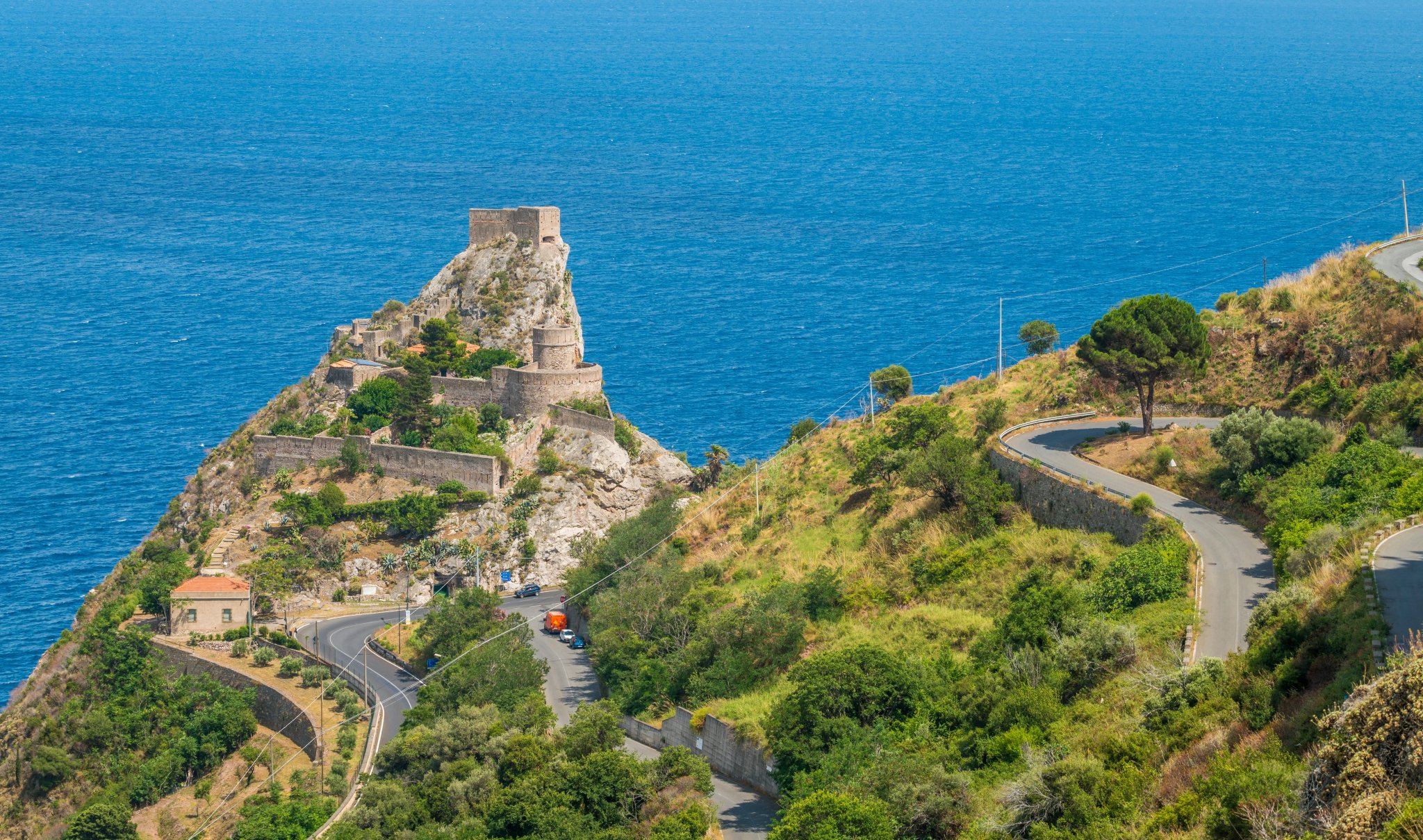
Traffic & Driving Style
Sicilians tend to be confident, fast drivers, but they are also very accustomed to sharing the road with cyclists. Outside the bigger cities, traffic is light and drivers usually give plenty of space when passing.
Keep in mind:
Expect narrow bends and slower overtakes on mountain or coastal sections
In towns, traffic can be more chaotic, so extra awareness helps
Riding single file is recommended on rural roads
With the right route selection (which your tours provide), traffic becomes a minimal concern.

Terrain & Weather Awareness
Sicily’s terrain varies dramatically:
Long climbs in the interior
Rolling hills along the coasts
Steeper volcanic slopes near Etna
In summer, heat can add difficulty, especially inland. In spring and autumn, conditions are excellent and stable, but daylight is shorter later in the year.
Best practices:
Stay hydrated, especially in warmer months
Start earlier on hot days
Use lights if visibility drops or you ride near dusk
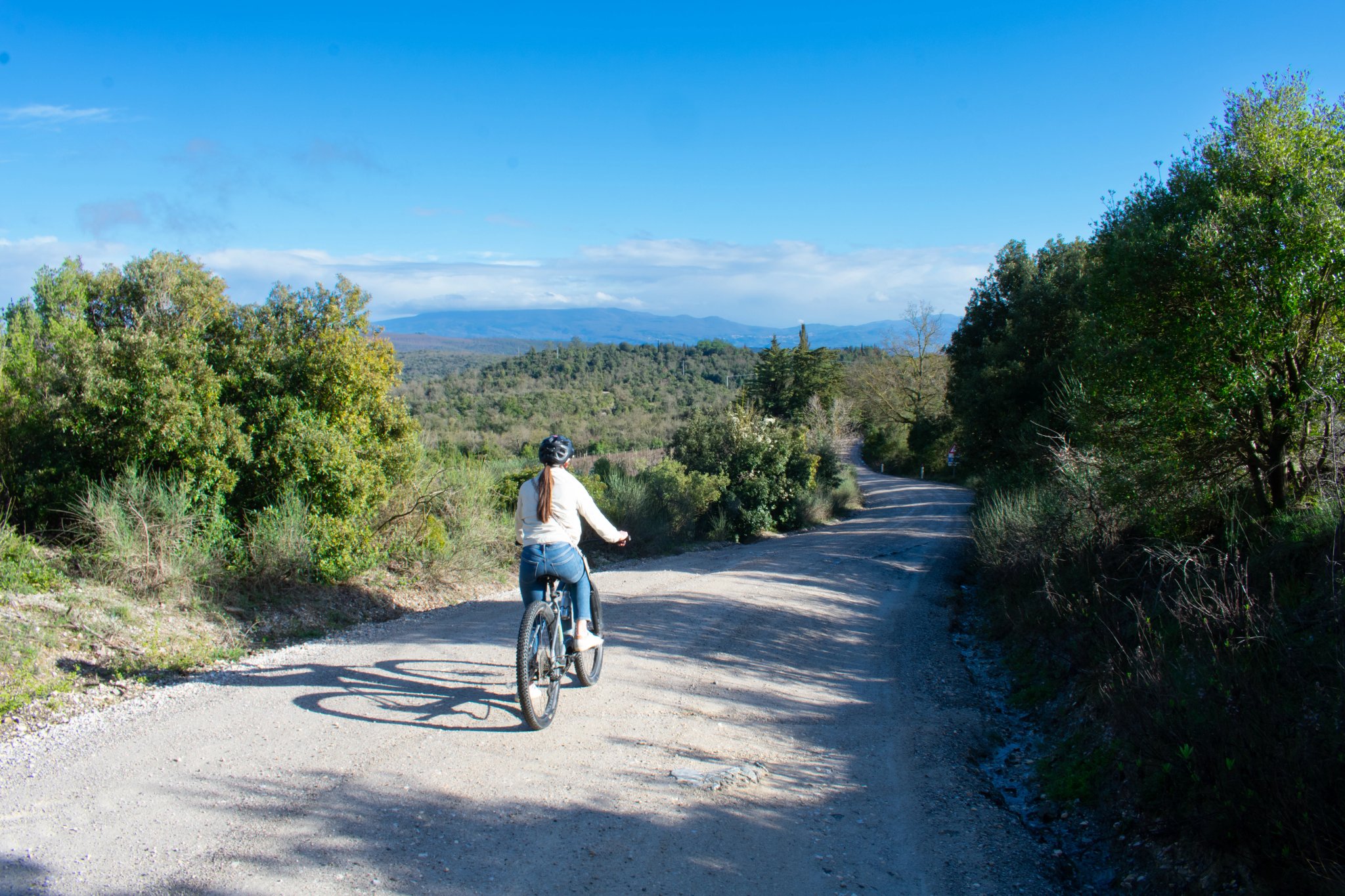
Bike Security & Support
Like anywhere in southern Europe, it’s wise to store bikes indoors overnight and use a lock in urban areas. Smaller towns are very safe, and rural theft is extremely rare.
Our tours provide:
Bike-friendly accommodations
Secure storage
Access to mechanical support if needed
This removes almost all common concerns.
Practical Safety Tips for Cycling Sicily
Ride single file on rural roads
Wear bright clothing and use front and rear lights
Carry enough water and a basic repair kit
Be alert on narrow bends and descents
Plan for shorter daylight in late autumn and winter
Follow the daily briefing and route notes provided
These small habits make a big difference and fit naturally into your daily rhythm.

Cycling in Sicily is safe, enjoyable, and incredibly rewarding — especially when you follow routes designed specifically for cyclists. With the right preparation and the support we provide on our tours, you can expect a smooth, secure, and memorable cycling experience on one of Italy’s most fascinating islands.
If you need more information on travel logistics for Italy — including what documents you’ll need, how to get around the country, or what to pack for a cycling holiday — you can find everything in our Ultimate Guide to Cycling in Italy. It’s the perfect companion to help you prepare for your trip with confidence.
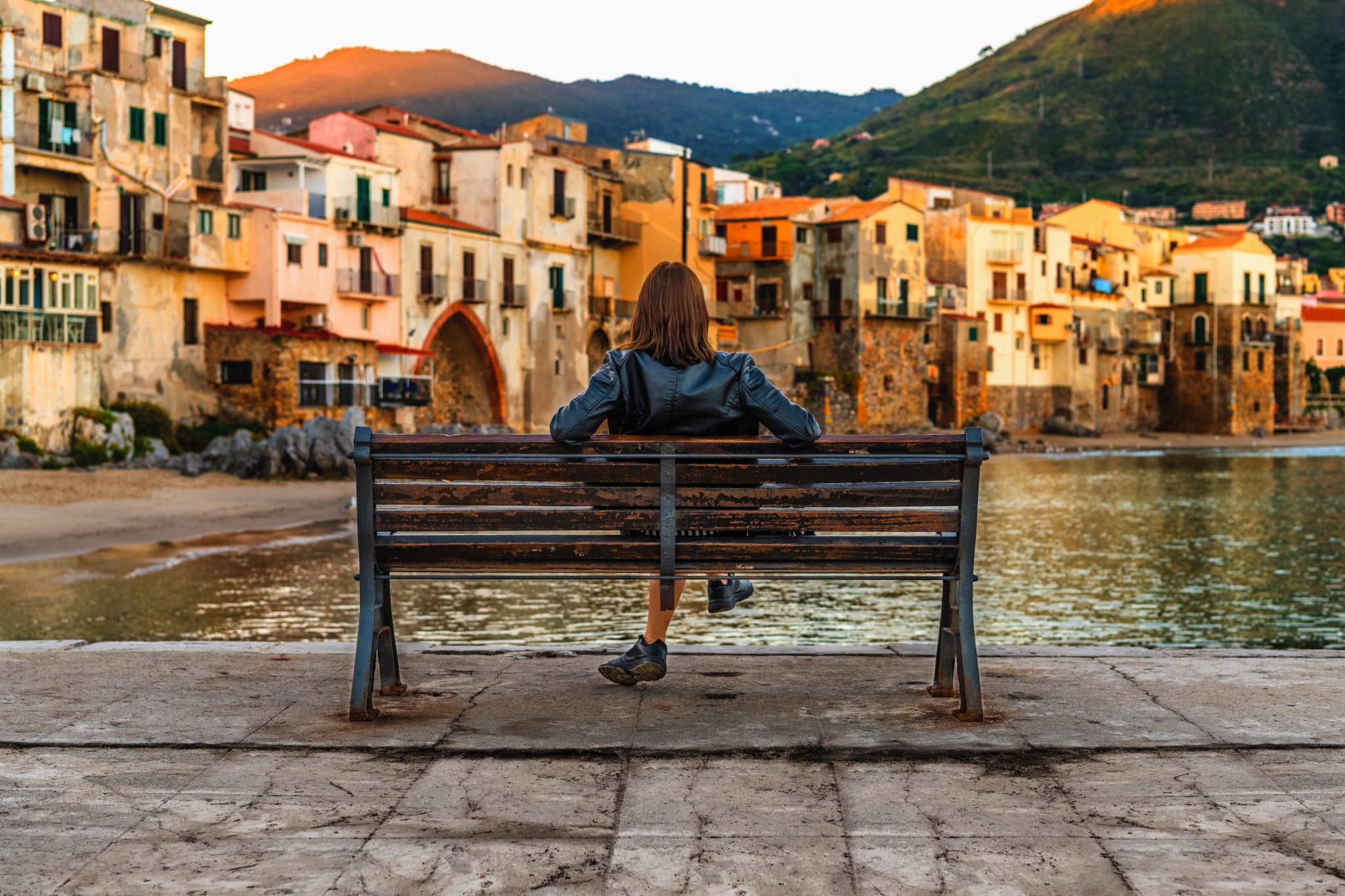
Start Your Cycling Adventure With Fully Prepared Itinerary
Planning a cycling holiday in Sicily is possible on your own — but the island’s size, terrain, and logistics can make it more complex than expected.
Choosing the right route, finding bike-friendly accommodations, arranging transport, and navigating Sicily’s rural road network all require time and local knowledge.
That’s where we come in. We’ve designed and refined our Sicily tours to showcase the island’s most scenic roads, authentic towns, and unforgettable cycling experiences — without the stress.
We take care of all the details, including:
Comfortable, bike-friendly accommodations
A detailed digital guidebook with daily route notes
GPS tracks for every stage of your tour
Luggage transfers between each stop
Local insights, must-see places, and hidden gems
Full support before and during your trip
Send us an inquiry and let’s create your perfect cycling journey across Sicily.

Hassle-Free
We handle itineraries, accommodations, and anything else you prefer not to deal with, so you can enjoy a carefree holiday.

Completely Customizable
Flexibility is our middle name — whether you want more or less, or just beyond ordinary, we’ll make it happen.

Book with confidence
We are a financially protected company, fully bonded and insured, keeping your money safe and allowing you to travel with confidence.

Unbeatable support
Our 24/7 customer support is where we show our passion, bringing you a better experience by making your well-being our number one priority.


.jpg&w=3840&q=75)
